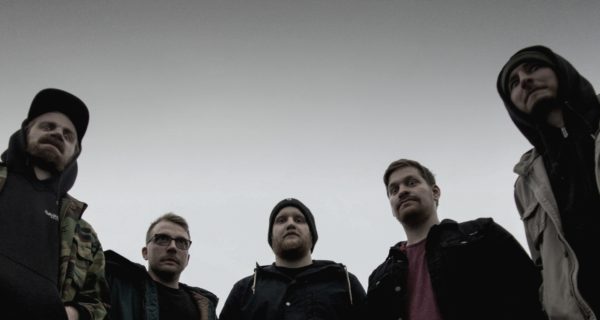Filled with passion for everything evil, Reptile Master from northern Norway are on a mission to spread the gospel of Doom. With strong roots in both traditional heavy metal, post-metal and sludge, they create a new sound composed of the outermost extremes found in aggression and sorrow. We caught up with Nicolay Tufte Østvold to discuss the ins and outs of the band.
Can you tell us about your background and environment where you are based and create your music?
Reptile Master was formed by a group of friends, all members of metal bands from a wide spectrum of metal genres. We all live in Tromsø, and we also produce and make our music here. Tromsø has an incredibly diverse music scene for a small town, and there’s a very good sense of solidarity across these groups. A huge part of the bands and artists based in Tromsø all have their rehearsal rooms and studios in the same building, and most of us know each other so it’s a very rewarding environment to create in.
How is your music created? Obviously, it’s very atmospheric, there’s always bass and vocals.
Most of our music is created by the band as a whole, and it’s very important to us that a riff or a song can be felt with both body and ears. A sludgy, slow riff should punch you in the stomach as well as the ears. Volume and the mass/wall of sound is a huge part of our music, but it shouldn’t be uncomfortable. We also try to stretch parts of tracks and try to reach a trance state. We are hugely influenced by drone music, as well as a wide range of different rock and metal music. We often figure out that if we turn down the BPM a bit more, it will be perfect. This process repeats itself sometimes and the result often is our meanest, slowest riffs. We try to balance the combination of eerie melancholy and gut-wrenching terror. Our song making often starts out with a sketch of a riff, and we jam on, and around it to find a structure and frame for the song.
In what way did the Norwegian metal scene influence you? I always wondered why is it so big there, is it just the weather or are there psychological reasons?
It haven’t been (to my knowledge) a very huge scene for doom/sludge/slow metal in Norway until recently, when these genres really blossomed. Black metal has obviously been a big part of Norwegian music export, and I believe most metal bands from Norway are at some point influenced by the music and the cold appearance of these bands. Reptile Master is more influenced by desert rock, both American and Middle Eastern, and also the repeating chants of Tibetan folk music. We also try to implement Norwegian folk music inspired parts, and tonal use.
We’re probably more inspired by nature and harsh weather than we think, but take it for granted since we’re in it all the time. It certainly comes in handy when you’re taking hostile metal band photos 🙂 From September to April we have about an hour of sun every 24 hours, so it’s probably easier to get inspiration to make dark music.
Do you consider music a form of catharsis – venting & sublimating negativity that’s around us?
Even though we – quoting Scott Kelly of Neurosis – try to capture the sound of the apocalypse, and make an unpleasant vibe in our music, we’re probably the most conflict-shy and harmless group of people above the Arctic Circle. We want people coming to see us live, to enter this trance-like state of mind and feel the music (it’s hard to explain it without sounding hippyish). If listeners can vent their negativity through us, perfect!
Can you tell us about your latest album?
“In the Light of a Sinking Sun” is the product of almost 5 years of playing as a band, slowly building a repertoire and gradually picking out the tracks that would fit well together on an album. We released an EP called “Hoist the Bell” a couple of years ago, but longed for a high quality studio recording. We played several mute film concerts (for Dr. Jekyll & Mr. Hyde and Cave of the Spider Women) making the whole arrangement from scratch during these years, which has been a huge inspiration for both the way we make music and how to make this (pretty extreme volume based) music work as a soundtrack to a movie for theatre audiences. These concerts have also influenced the way we made the more atmospheric parts of the album, as well as how to build up the dynamic of tracks.
